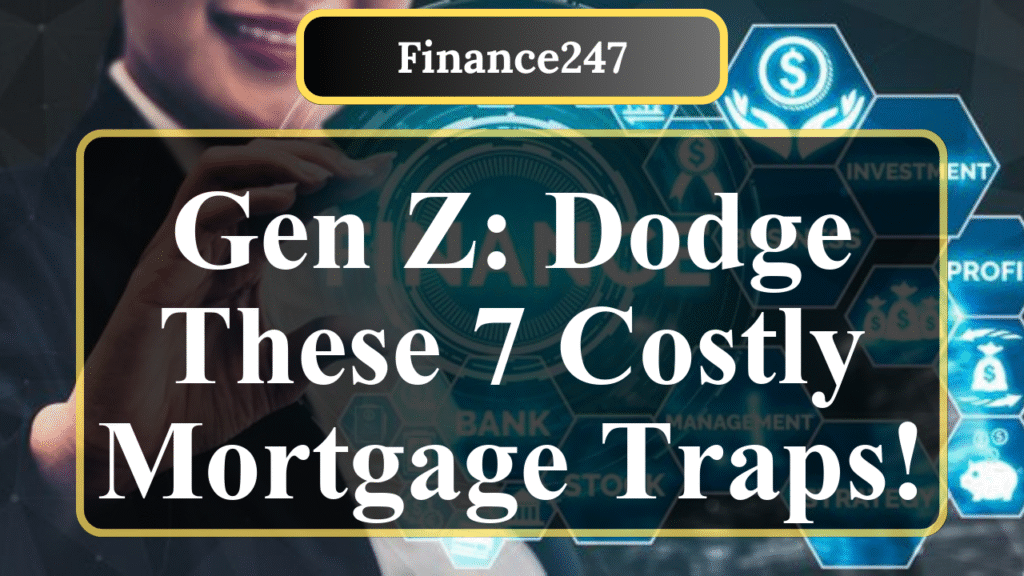Gen Z first-time homebuyers face unique challenges in today’s market. This article outlines seven critical mortgage mistakes to avoid, including skipping preapproval, overborrowing, and ignoring hidden costs. With practical tips backed by real-time data, it guides young buyers toward smarter financial decisions for successful homeownership.
Navigating the Mortgage Maze: Avoiding Pitfalls for Gen Z Homebuyers
1. Skipping Mortgage Preapproval
Many Gen Z buyers dive into house hunting without securing a mortgage preapproval, a critical step that shows sellers you’re a serious buyer. Preapproval involves a lender reviewing your finances, including credit score, income, and debt-to-income (DTI) ratio, to determine how much you can borrow. According to the National Association of Realtors, 58% of first-time buyers in 2024 who skipped preapproval faced delays or lost out on homes due to uncompetitive offers. Without preapproval, sellers may prioritize other buyers, especially in competitive markets where homes receive multiple bids. To avoid this, get preapproved by at least three lenders to compare rates and terms, ensuring you know your budget before falling in love with a property.
2. Overborrowing Beyond Your Means
With median home prices at $412,300 in Q2 2025, per Zillow, Gen Z buyers, earning an average of $45,000 annually, may be tempted to stretch their budgets. Lenders often approve loans based on maximum debt-to-income ratios (typically 43%), but this can lead to financial strain. For example, a $350,000 mortgage at 6.8% interest results in a $2,300 monthly payment, consuming nearly 62% of a $45,000 earner’s take-home pay—far above the recommended 25%. Overborrowing risks default, especially with rising costs like property taxes and maintenance. Stick to a budget where your mortgage payment, including taxes and insurance, doesn’t exceed 28% of your monthly income.
3. Ignoring Hidden Homeownership Costs
Gen Z buyers often focus on the down payment and mortgage payment but overlook closing costs, which range from 2–6% of the loan amount, per LendingTree. For a $300,000 loan, that’s $6,000–$18,000 due at closing. Additional costs like property taxes, homeowners insurance, and maintenance can add $500–$1,000 monthly. A 2023 Bankrate survey found 40% of Gen Z homeowners regretted not budgeting for these expenses. Create a detailed budget that includes all homeownership costs and maintain an emergency fund of 3–6 months’ expenses to avoid financial stress.
4. Not Shopping Around for Lenders
Many first-time buyers accept the first mortgage offer they receive, missing out on better rates. Zillow’s 2025 data shows 56% of homebuyers only get preapproval from one lender, yet shopping multiple lenders can save thousands over a loan’s life. A 0.5% rate difference on a $300,000, 30-year mortgage saves about $30,000 in interest. Compare at least three lenders, focusing on interest rates, fees, and loan terms. Use online tools or consult a mortgage broker to find competitive options tailored to your financial profile.
5. Making Large Purchases Before Closing
Applying for new credit or making large purchases during the mortgage process can derail your approval. Lenders recheck your credit and DTI ratio before closing, and new debt, like a car loan or furniture purchase, can lower your credit score or increase your DTI, risking loan denial. A 2025 Bankrate report notes that 20% of first-time buyers faced delays due to credit changes. Avoid new credit applications and large purchases until after closing to protect your approval status.
6. Choosing the Wrong Mortgage Type
Gen Z buyers may be swayed by adjustable-rate mortgages (ARMs) or exotic loan products offering low initial payments. However, ARMs can reset to higher rates after 2–5 years, increasing payments significantly. For example, a 5/1 ARM at 5.5% could jump to 8%+, raising a $2,000 monthly payment to $2,600. Investopedia warns that such loans contributed to defaults during the 2008 crisis. Opt for fixed-rate mortgages for stability, especially if you plan to stay in the home long-term. Explore government-backed options like FHA loans (3.5% down) or VA loans (0% down for eligible veterans) for more lenient requirements.
7. Waiving the Home Inspection
In hot markets, some buyers waive home inspections to make offers more appealing, a risky move. A 2023 NAR survey found 15% of first-time buyers skipped inspections, and 30% of those faced unexpected repair costs exceeding $10,000. Inspections, costing $300–$500, can uncover issues like faulty wiring or structural damage, allowing you to negotiate repairs or walk away. Always include an inspection contingency in your offer to avoid costly surprises that could strain your finances as a new homeowner.
Disclaimer: This article is for informational purposes only and not intended as financial advice. Consult a licensed financial advisor or mortgage professional before making decisions. Information is sourced from reputable publications, reports, and real-time data from Zillow, NAR, Bankrate, and other industry sources. Always verify details with professionals.


